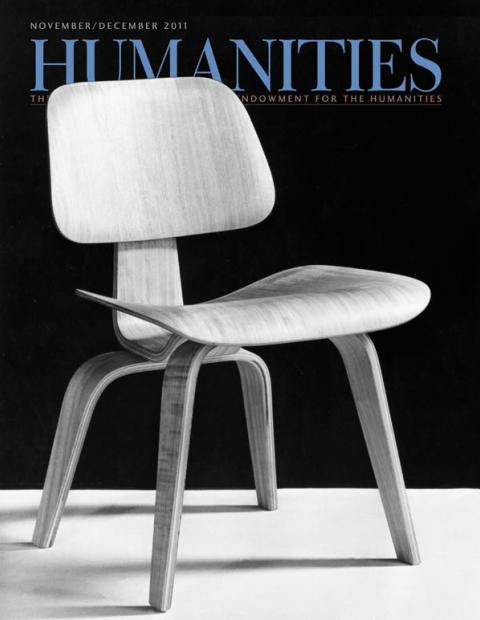Put on your dancing shoes and get ready to join the chorus line, because for this Impertinent Questions, we’re tapping our way through the history of Broadway with Larry Stempel, professor of music at Fordham University. Stempel began his book, Showtime: A History of the Broadway Musical Theater (W. W. Norton, 2010), in 1985 with an NEH Fellowship.
What made you decide to write a history of the Broadway musical?
Curiosity? Hubris? Naïveté? I’m no longer sure. Back in the 1970s, as a songwritingmember of Lehman Engel’s BMI Musical Theatre Workshop, I wanted to learn more about the history of the medium in which I was working. Non-scholars had written surveys of it; scholars had written at length about some of its parts. I wanted to take a scholarly look at the whole thing. Had I known it would take over twenty-five years to finish, I might not have begun. So here’s to curiosity, hubris, and naïveté—at least in part.
Oklahoma! is considered a turning point in Broadway theater. What made it revolutionary?
Revolutionary or evolutionary, Oklahoma! did not occur in a vacuum. Nonetheless, it found fresh, often compelling ways to make the show’s musical moments follow its story (rather than the other way around, which was an earlier way of doing things on the commercial stage) and still succeed in musical-comedy terms.
By the 1970s, the “concept musical” had staked out a place on Broadway. What makes a musical conceptual?
When a show is less concerned with telling a linear story than with looking at a theme from multiple perspectives: marriage in Company, for example. In spirit, concept musicals resemble revues like As Thousands Cheer more than they do book shows like Oklahoma!—except that, unlike revues, their performers remain in character throughout.
How did the emergence of the choreographer as director change the musical?
It led to more fluid approaches in the staging, movement, and pacing of a show, creating a new seamlessness between its musical and nonmusical parts. Choreographer-director Jerome Robbins even abandoned the use of separate choruses of singers and dancers for West Side Story in favor of a single chorus of performers who could do it all: sing and dance and act.
Let’s play director. You’re casting the role of Dolly Levi in Hello, Dolly! Carol Channing or Barbra Streisand?
Ethel Merman. Jerry Herman wrote the show with her in mind, and, though she did not create the role, she finally did perform it on Broadway at the end of its run in 1970.
For the role of Nathan Detroit in Guys and Dolls. Frank Sinatra or Nathan Lane?
Sam Levene, who created the role. Musically, he may have been tone-deaf, but he inhabited Frank Loesser’s world as a character more than a caricature. Listen to his “All right, already, I’m just a no-goodnick . . .” on the original cast recording of “Sue Me.”
If you could revive a musical, which one would you pick and why?
Merrily We Roll Along.It’s a musical with a superlative Stephen Sondheim score that flopped and disappeared from Broadway soon after its premiere in 1981 largely because of problems with its book, casting, and staging. In revised versions, the show has succeeded elsewhere since then, despite the difficulty of its central conceit: It tells its story backwards. A revised revival would give Broadway theatergoers a chance to see for themselves whether it really works.
Spider-Man: Turn Off the Dark had a troubled pre-run and bad press as a result. Have other musicals had equally rocky starts?
Yes, though none in which the financial stakes were so high. The Scarlet Pimpernel, for example, had similar issues though it dealt with them differently. It opened to generally poor notices on Broadway in 1997; reopened on Broadway in 1998 in version 2.0, re-produced, rewritten, and restaged; then reopened again on Broadway in 1999 in version 3.0. As far as I know, it hasn’t reopened on Broadway since 2000, the last time it closed.
Broadway musicals are living things. What kinds of sources did you use to get a sense of the musicals that you wrote about?
For shows I’d never seen and whose books and/or scores had not been published, I went to typescripts for the dialog, manuscripts and sheet music for the songs, recordings for performances, and photographs and costume sketches for the production elements. When even these were unavailable, I went to first-person descriptions: newspaper criticisms, performers’ memoirs, even comments by articulate theatergoers such as Mark Twain, who caught a New York performance of The Black Crook in the 1860s and left a vivid account of what he saw.
Your best archival discovery?
Working on Oklahoma!, I came across an early draft by Hammerstein of a ballet scenario for the end of Act 1. It was nothing like the famous dream ballet that came to occupy the spot. I asked Agnes de Mille, the show’s choreographer, why the discrepancy. She said she had intervened, insisting the ballet be changed from the seemingly pointless “spectacle and girls and tights” of Hammerstein’s scenario to a psychological probing of the heroine’s fears. “There’s no sex in your play,” she told me she told Hammerstein. He must have listened; the rest is history.


